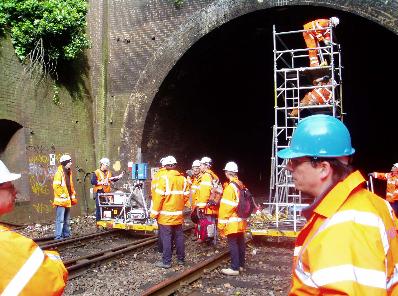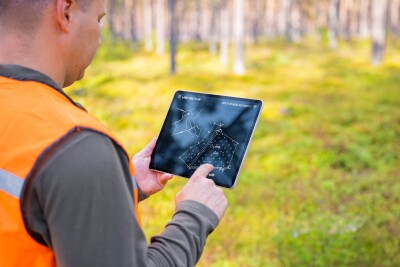In a project to monitor Britain’s railway tunnels, Halcrow Group Limited (London) is employing 3D laser scanning technology to efficiently evaluate deformations in the tunnel walls. The acquired data will aid
Halcrow’s client, Network Rail – the owner of Britain’s railway infrastructure – in monitoring the potentially dangerous bulges for worsening conditions. “These are all brick-lined, Victorian-era tunnels,” says Thomas Greig, project manager for tunnels and underground space at Halcrow. “There are two issues. If there’s a bulge, it might require remedial work to repair, based on our back-analysis of how much it can bulge without collapsing. The other issue is it might be approaching or encroaching on the clearance envelope” – the minimum space required for rolling stock to pass without clashing – “thus requiring specific monitoring.” What drove Halcrow to investigate laser scanning? “The traditional approach, which is to rip it out and rebuild, is no longer considered cost-effective,” Greig reports. Seeking a better solution, in 2001 the company began experimenting with existing laser data that had been collected by Network Rail for a different application, namely clearance analysis – measuring and documenting tunnel profiles to guard against clashes with rolling stock. In 2003 it selected Z+F’s Imager 5003 3D scanner and
began using it to collect the data needed to compare portions of the tunnel known to be undeformed with deformed portions. This process is then used to predict the need for either remediation or future monitoring.
November 9, 2004
Laser Scanning Key to Cost-Effective Rail Tunnel Monitoring for Halcrow






